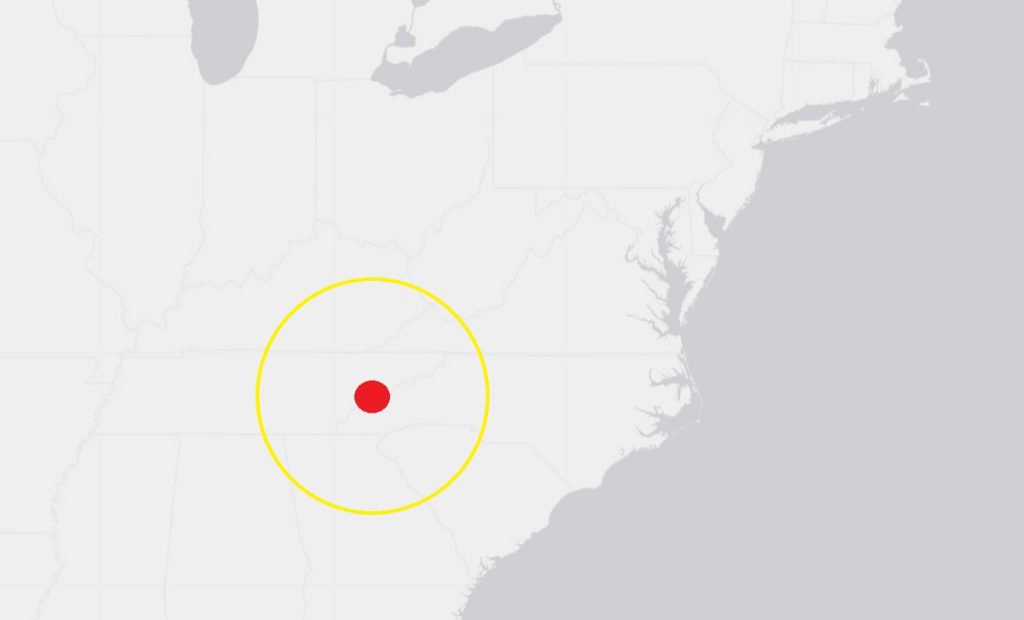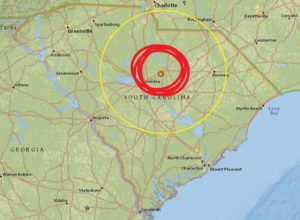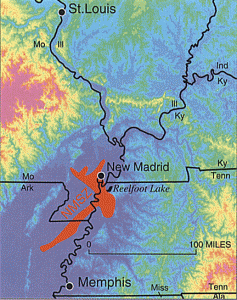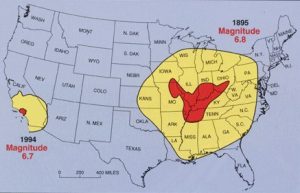
An earthquake struck eastern Tennessee this morning, according to USGS, while the ongoing swarm in South Carolina appears to have gone quiet. Today’s earthquake struck roughly 4 miles west of Pittman Center, Tennessee, not far from the border with North Carolina. The magnitude 2.6 event had a depth of only 0.6 km, making it a very shallow earthquake. Earthquakes are more common in western Tennessee than eastern Tennessee; in May, two earthquakes struck near Ridgely and Newbern on May 31.
While earthquakes are more common in western Tennessee than eastern, three other earthquakes did strike near today’s in the last 7 days on July fourth: those magnitude 2.1-2.3 events had epicenters near Wildwood and Tellico Village.

While Tennessee is shaking, South Carolina isn’t. Elgin, South Carolina has been home to more than 45 earthquakes since December. The frequency and intensity of earthquakes increased last week, prompting officials to announce that they’re planning to hold a townhall meeting there soon to address the situation. This swarm began December 27, 2021, with a magnitude 3.3 earthquake centered near Elgin, South Carolina. Since then, more than 47 low-magnitude earthquakes have occurred in the Elgin-Lugoff area, with the strongest being a magnitude 3.6 on June 29.
According to USGS, a swarm is a sequence of mostly small earthquakes with no identifiable mainshock. “Swarms are usually short-lived, but they can continue for days, weeks, or sometimes even months,” USGS adds. However, the South Carolina event doesn’t fit the typical definition of a swarm since the first event was substantially larger than the rest.
According to USGS, “aftershocks” are a sequence of earthquakes that happen after a larger mainshock on a fault. “Aftershocks occur near the fault zone where the mainshock rupture occurred and are part of the ‘readjustment process’ after the main slip on the fault,” says USGS. However, aftershocks of a 3.3 magnitude earthquake would only last a few days, not the week plus they have.

The last earthquake around Elgin, South Carolina occurred three days ago, providing some calm to local residents that have been dealing with months of random earthquakes. However, there have been other multi-day pauses in this swarm and earthquakes could return to South Carolina without warning.
While many people associate earthquakes with western states more so than Tennessee where today’s quake struck, one of the largest earthquakes to strike the United States struck not far away. And scientists are concerned that residents in this area aren’t properly prepared for the next major earthquake to strike this area.
On December 16, 1811, at roughly 2:15am, a powerful 8.1 quake rocked northeast Arkansas in what is now known as the New Madrid Seismic Zone. The earthquake was felt over much of the eastern United States, shaking people out of bed in places like New York City, Washington, DC, and Charleston, SC.
The ground shook for an unbelievably long 1-3 minutes in areas hit hard by the quake, such as Nashville, TN and Louisville, KY. Ground movements were so violent near the epicenter that liquefaction of the ground was observed, with dirt and water thrown into the air by tens of feet.
But the quakes didn’t end there. From December 16, 1811 through to March of 1812, there were over 2,000 earthquakes reported in the central Midwest with 6,000-10,000 earthquakes located in the “Bootheel” of Missouri where the New Madrid Seismic Zone is centered.

The second principal shock, a magnitude 7.8, occurred in Missouri weeks later on January 23, 1812, and the third, an 8.8, struck on February 7, 1812, along the Reelfoot fault in Missouri and Tennessee.
The main earthquakes and the intense aftershocks created significant damage and some loss of life, although lack of scientific tools and news gathering of that era weren’t able to capture the full magnitude of what had actually happened. Beyond shaking, the quakes also were responsible for triggering unusual natural phenomena in the area: earthquake lights, seismically heated water, and earthquake smog.
The area remains seismically active and scientists believe another strong quake will impact the region again at some point in the future. Unfortunately, the science isn’t mature enough to tell whether that threat will arrive next week or in 50 years. Either way, with the population of New Madrid Seismic Zone huge compared to the sparsely populated area of the early 1800s, and tens of millions more living in an area that would experience significant ground shaking, there could be a very significant loss of life and property when another major quake strikes here again in the future.